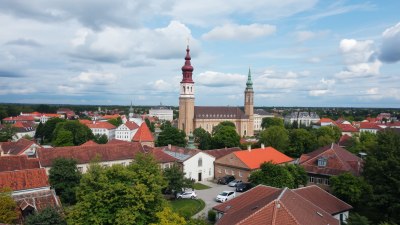How to See the World Through the Eyes of a Historian
Explore how historians interpret events and understand our past through their unique perspectives.

Seeing the world through the eyes of a historian involves adopting a perspective that values the complexity of historical events and the narratives that shape them. This approach requires critical thinking, an awareness of one's biases, and an understanding of various historical contexts. By doing so, one can appreciate how history informs the present and influences future possibilities.
Historians study past events with a level of scrutiny that is often missing in everyday life. They analyze sources, weigh evidence, and draw conclusions based on a careful interpretation of facts. Here are some key elements that define the historian's perspective:
Understanding Context
Context is crucial in historical analysis. It involves recognizing the social, political, and economic circumstances surrounding an event. A historian will look beyond the immediate facts and consider the conditions that may have influenced individuals' actions. For instance, studying the American Revolution involves understanding Britain’s colonial policies, the Enlightenment ideas that were circulating, and the economic conditions in the colonies.
Interpreting Sources
Historians rely on primary and secondary sources to construct narratives. Primary sources include documents, artifacts, and testimonies from the time being studied, while secondary sources analyze and interpret those primary materials. A historian evaluates the reliability of these sources, considering authorship, purpose, and potential bias. They ask whether the source reflects the views of a particular group and how those views might have been shaped by the time period.
Recognizing Complexity
History is rarely black and white. A historian must embrace the complexity of events and the multiplicity of perspectives involved. This means acknowledging that history is often contested, with different groups holding varying interpretations of the same events. For example, the legacy of colonialism is viewed differently by colonizers and the colonized, and historians must navigate these differing perspectives to form a holistic view.
Critical Thinking and Analysis
To think like a historian involves critical engagement with various interpretations of events. Historians scrutinize arguments, analyze evidence, and challenge prevailing narratives. They consider alternative explanations and are open to changing their views based on new evidence. For example, the re-examination of suffrage movements has led historians to recognize the contributions of women of color who were often marginalized in mainstream narratives.
Recognizing the Influence of Presentism
Presentism is the tendency to view historical events through the lens of contemporary values and beliefs. While it’s natural to relate past events to the present, a historian strives to avoid imposing modern sensibilities on the past. They seek to understand historical figures in the context of their time, which may differ significantly from today’s viewpoints. This requires empathy and an appreciation for the values, norms, and constraints of previous eras.
Embracing the Role of Empathy
Historians often act as storytellers. Through their research, they give voice to those who may have been overlooked or silenced. This role involves understanding the human experience behind historical events. Empathy allows historians to connect with individuals from the past, making their struggles and achievements relatable. By emphasizing personal narratives, historians can create a more engaging and nuanced understanding of history.
Integrating Interdisciplinary Approaches
Historian's perspectives often benefit from interdisciplinary approaches. Collaboration with experts in sociology, anthropology, economics, and political science enriches historical study. Issues such as migration, conflict, and cultural exchange are complex and can be better understood through multiple lenses. For example, studying the Great Migration in the United States can involve elements of social history, economics, and culture. By integrating various disciplines, historians gain a richer understanding of the past.
Using Ethical Considerations
Ethics play a significant role in history. Historians must consider the implications of their findings and how their narratives may impact contemporary discussions. They should be aware of the power dynamics involved in telling history, including whose stories are told and who is left out. For instance, colonial histories often require careful ethical considerations to avoid perpetuating harm to marginalized communities. Historians have a responsibility to present histories accurately and sensitively.
Engaging with Public History
Historians also engage with public history, bringing their insights beyond academic circles. This can involve creating accessible resources like documentaries, exhibits, or podcasts that tell historical stories to a broader audience. By reaching out to the public, historians can foster a greater appreciation for history and encourage critical discussions about how the past shapes the present and future. Successful public historians often bridge academia and community knowledge, promoting collaborative projects that bring history to life.
Teaching Historical Perspectives
One of the significant roles of historians is education. Teaching history involves instilling critical thinking and analytical skills in students. By confronting challenging topics and discussing various interpretations, educators help students understand the complexities of the past. Teaching methodologies that emphasize inquiry, debate, and engagement can inspire students to explore history through diverse lenses, encouraging them to ask questions and seek their answers.
Fostering Lifelong Learning
Lastly, historians embody a commitment to lifelong learning. They continuously seek new knowledge, stay updated with emerging research, and engage with contemporary debates. This attitude helps historians remain relevant in discussing modern issues and understanding how historical trajectories shape current realities. A true historian recognizes that history is an ever-evolving discipline, with new discoveries and interpretations consistently reshaping our understanding.
In summary, viewing the world through the eyes of a historian goes far beyond analyzing dates and events. It encompasses a nuanced understanding of the past, integrating context, empathy, and critical analysis. By adopting this perspective, we not only enrich our appreciation of history but also gain insights into how our past shapes our present and informs our future.











